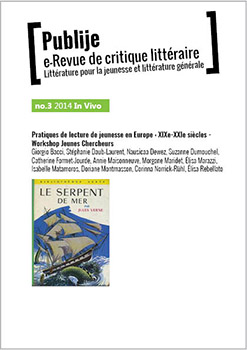La réception de la littérature de jeunesse : du lecteur supposé aux lecteurs réels
Résumé
Since the emergence of a French sociology of childhood in the 1990s, only a few sociologists have been interested in studying cultural objects intended for children (books, toys etc.). Those who worked on children’s books have shown that they reveal norms and representations of a society (Cadolle, 2001; Brugeilles, Cromer, Cromer, 2002).
This study focuses on how alimentation norms, relayed by so-called “albums”, have evolved over time. To this end, 112 children’s books (published from 1812 to 2012) were studied. We can establish not only that norms (e.g. gluttony, gender, representation of childhood, hygiene, security…) have evolved over time but also that the formulation of norms has too. Until the 1990s, norms were less explicit and only suggested in the texts; “recent” children’s books are more “ambiguous”. Therefore we may suppose that, since the beginning of the 1990s, the albums have imposed less norms on children. We may assume that “recent” books leave more “room” for children’s interpretation.
Consequently, this research project is also interested in how children understand and interpret these norms. Is the understanding of books the same for all readers? Does children’s reading depend on their gender, social class or ethnic group? To put it another way, this research project is interested in how children make use of norms relayed by books. In order to examine children’s “reflexive capacity”, young readers (6 to 8 years old) have been interviewed about three albums which were read to them earlier on.
Téléchargements
Publiée
Comment citer
Numéro
Rubrique
Licence
Les auteurs qui publient dans cette e-revue acceptent les termes suivants :
Les auteurs conservent le droit d'auteur et accordent à la revue le droit de première publication, sous la licence Licence d’attribution Creative Commons permettant à d'autres de partager les articles tout en en reconnaissant la paternité et la publication initiale dans cette revue.





